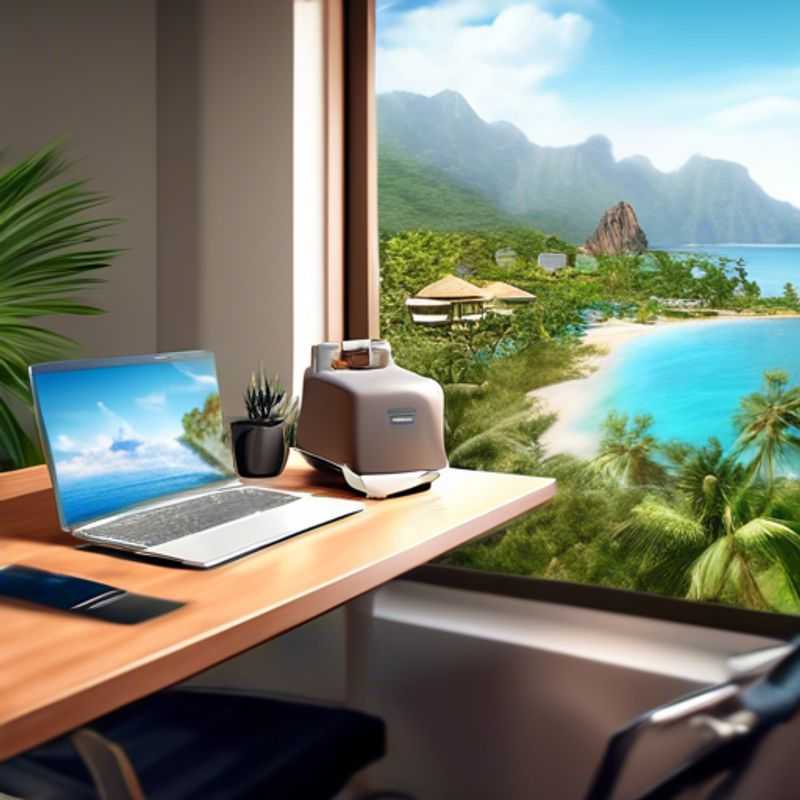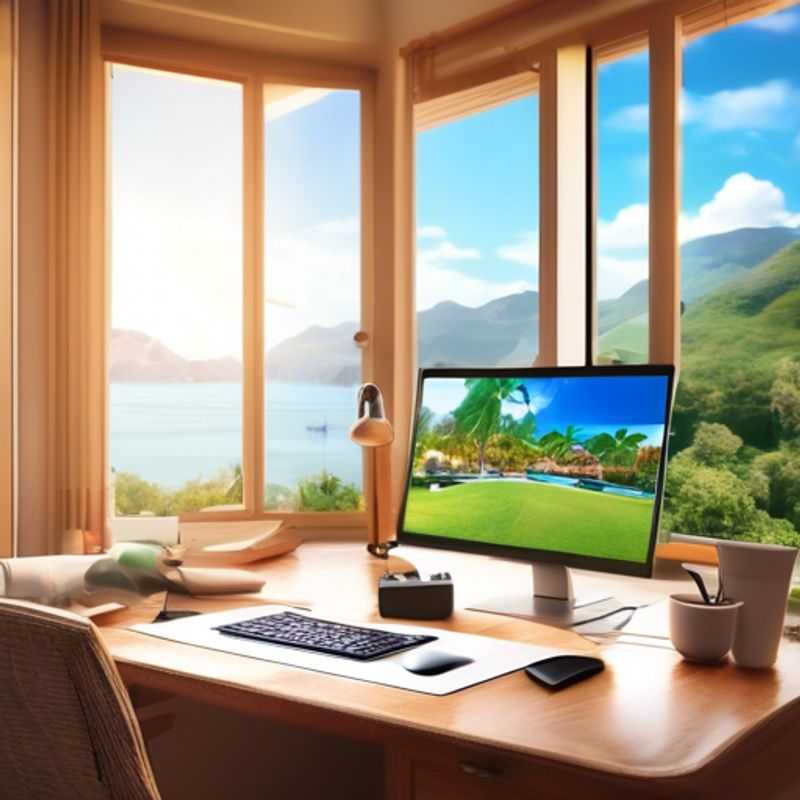Top Things to Know About Special Equipment For Working From Home

Top Things to Know About Special Equipment For Working From Home
Setting up your home office can be a game-changer for productivity, but before you dive into the exciting world of new gadgets, it's crucial to consider a few key points.

Work-From-Home Setup: Choosing the Right Gear for Your Needs
Setting up your home office effectively is crucial for productivity and comfort. It starts with understanding your specific needs and identifying the essential equipment to ensure a smooth workflow.
First, consider your work requirements. What kind of tasks will you be doing? Do you need a powerful computer for video editing or a simple laptop for writing? Do you require a dedicated printer or can you rely on cloud services? This will guide your equipment choices.
Next, think about your workspace. Is it a dedicated office room, or are you working from a corner of your living space? Will you need a standing desk for better posture? What kind of lighting is available? These factors will influence the types of furniture, lighting, and accessories you’ll need.
Finally, factor in your budget. While it's tempting to invest in high-end equipment, you can find great deals on refurbished or used items. Consider if you need the latest technology or if a more affordable option will suffice. Remember, some expenses, like subscriptions for productivity software or cloud storage, may be recurring.
Here are some basic equipment considerations:
Computer: A powerful enough laptop or desktop is your primary tool. Consider your software needs and whether you require a specific operating system.
Monitor: A larger, high-resolution monitor can improve your focus and reduce eye strain. This is especially helpful for tasks like graphic design or programming.
Keyboard and Mouse: Invest in comfortable and ergonomic peripherals for long-term use. This will minimize discomfort and improve productivity.
Headset: A quality headset with a microphone is essential for clear communication during video calls and online meetings.
Printer/Scanner: If you need to print or scan documents, consider a multi-function printer that combines both features. You can also consider a cloud-based printing service.
Webcam: A good webcam is a must-have for video conferencing and online meetings.
Lighting: Adequate lighting is crucial for eye comfort and productivity. Invest in a desk lamp or consider using natural light.
Remember, your home office setup should be personalized to your needs and preferences. Don't be afraid to experiment and find what works best for you. And remember to take breaks and prioritize your well-being! This will ensure your home office is a productive and comfortable space where you can thrive.

Finding the Right Fit: Researching Reliable Brands and Durable Models
When researching reliable brands and models that offer quality and durability, focus on companies with a proven track record and positive customer reviews. Look for brands that emphasize robust construction, high-quality materials, and comprehensive warranties. Consider researching independent reviews and comparisons from reputable sources.
For example, when looking for a refrigerator, research brands known for their long-lasting performance and reliable components. Read reviews to understand common issues and how well the manufacturers address them. You might also want to consider the cost of repairs if any arise.
Don't solely rely on price alone. Invest in quality over immediate savings. A durable product may initially cost more, but it can save you money in the long run by reducing the need for replacements or repairs.
Remember, thorough research is key. It ensures you're making an informed decision about a product that will meet your needs for years to come.

Ergonomics for Productivity: Making Your Work Environment Comfortable
Ergonomics is the science of designing and arranging things people use so that the interaction is safe, comfortable, and efficient. When it comes to equipment, ergonomics plays a crucial role in ensuring comfort and productivity.
Here are some key factors to consider for ergonomic design:
Posture: The equipment should promote good posture, minimizing strain on the back, neck, and wrists. Adjustable chairs, desks, and monitor stands are essential.
Reach: Equipment should be within easy reach, reducing unnecessary movements and strain. This involves considering the height and placement of keyboards, mice, and other frequently used tools.
Lighting: Proper lighting is crucial for reducing eye strain. Ensure adequate lighting levels, avoiding glare and shadows.
Comfort: The equipment should be comfortable to use. Consider the material, padding, and temperature of surfaces. For example, using a comfortable mouse and keyboard can significantly reduce hand fatigue.
Training: Proper training on how to use the equipment ergonomically is essential. This helps users develop good habits and avoid injuries.
By incorporating ergonomic principles into the design and use of equipment, you can significantly enhance employee comfort, reduce the risk of musculoskeletal disorders, and improve overall productivity.

Understanding Technical Specs & Compatibility: A User's Guide
Understanding the technical specifications and compatibility of your devices is crucial for optimal workflow product performance. Here's a quick guide to help you navigate this process:
Device Compatibility: Before you consider purchasing a new workflow product, ensure it's compatible with your existing devices. Check for compatibility with your operating system (Windows, macOS, Linux), hardware (processor, RAM, storage), and software (other applications you use).
Technical Specifications: Pay attention to the technical specifications provided by the manufacturer. Key factors include:
* Processor: A powerful processor ensures smooth operation, especially for demanding tasks.
* RAM: Sufficient RAM is vital for multitasking and running memory-intensive applications.
* Storage: Consider the storage space you'll need based on your data and applications.
* Connectivity: Ensure the product supports the necessary connections (Wi-Fi, Bluetooth, USB) for your setup.
Cost Implications: While compatibility is crucial, be aware of potential costs associated with upgrading your existing setup to accommodate the new product. This might involve purchasing new hardware or software, or even hiring a technician for installation.

Don't Forget the Extras: Equipment, Accessories, and Subscriptions
When factoring in the cost of equipment and additional accessories or subscriptions, it's crucial to have a comprehensive understanding of your needs and budget. Here's a breakdown of key factors to consider:
Initial Equipment Costs: The upfront cost of essential equipment, such as computers, software, and specialized tools, is a significant starting point. Research different brands and models to find the best value for your specific needs. Remember to include the cost of any necessary peripherals like printers, scanners, or external drives.
Accessories: Consider any additional accessories that might enhance your workflow. This could include things like ergonomic keyboards, high-quality monitors, specialized software plugins, or external storage devices. Assess if these accessories are truly necessary and if the added expense aligns with your budget and project goals.
Subscription Services: Many workflow products require recurring subscriptions for ongoing access to software updates, cloud storage, or online services. Factor in the monthly or annual cost of these subscriptions and make sure you understand the terms and conditions of the subscription, such as cancellation policies and renewal options.
Maintenance and Repairs: While less frequent, plan for potential maintenance or repair costs for your equipment. This might include software updates, hardware replacements, or technical support services. It's wise to budget for these eventualities, especially for critical equipment that is essential for your workflow.
Training and Support: If you're new to a particular software or technology, factor in the cost of training resources, such as online courses, workshops, or one-on-one coaching. Additionally, consider the potential cost of ongoing support services if you require technical assistance or troubleshooting help.
By carefully evaluating these factors, you can develop a realistic budget that accounts for the total cost of ownership for your workflow products.

Financing and Leasing Options: When Outright Purchase Isn't Possible
If buying equipment outright isn't possible, financing or leasing are great alternatives. Financing essentially lets you borrow money to purchase the equipment, paying it back over time. You own the equipment from the start, but you'll make regular payments with interest.
Leasing is different, you don't own the equipment. You pay monthly fees to use it for a set period. At the end of the lease, you can return it, purchase it, or lease another.
Here are some things to think about:
Financing:
Pros: Ownership of the equipment, potentially tax benefits.
Cons: Interest charges, potential for higher total cost compared to leasing.
Leasing:
Pros: Lower upfront costs, potential for newer equipment, may offer tax advantages.
Cons: No ownership, you may not have the latest technology, you might face lease termination penalties.
To make the best choice, consider your budget, how long you need the equipment, and whether you want to own it. It's wise to shop around and compare different financing and leasing offers. Always read the fine print carefully.

Get to Know Your Equipment: Setup and Maintenance Essentials
Understanding the setup and maintenance needs of your equipment is crucial for ensuring its longevity and optimal performance. It's like taking care of your car – regular checkups and maintenance keep it running smoothly.
Before you even get started, read the manual. It's your bible for understanding the equipment's specifications, setup instructions, and recommended maintenance schedule.
The setup process might involve calibration or configuration, depending on the equipment. It's important to follow the manual's instructions to ensure everything is set up correctly for optimal performance.
Maintenance usually includes regular cleaning, checking for wear and tear, and replacing parts as needed. Some equipment may require special lubricants or cleaning solutions.
Remember, prevention is better than cure. Following the recommended maintenance schedule will help you avoid costly repairs and downtime.
If you're unsure about any aspect of setup or maintenance, consult the manufacturer or a qualified technician. They can provide expert advice and ensure your equipment is in tip-top shape.

